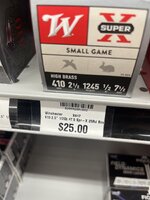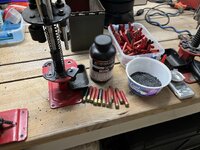cuerro viejo
WKR
- Joined
- Apr 1, 2013
- Messages
- 3,686
New hunter here, I’ve been reading and listening to a lot of the small caliber content from Form and others and learning a lot.
I thought I’d just be a big game rifle guy, but I’m wanting to try my hand at it all! So in looking at shotguns, I wondered if there’s a similar education to be had for shotguns.
With shotguns, the conventional wisdom seems to be that you need a certain amount of weight and barrel length for stability, and a larger bore as one can handle for denser pattern performance. Typically, all that a lighter, lower gauge shotgun is considered good for is being easier to carry around.
But being new to it all, it doesn’t quite make sense to me why one needs all that barrel length to shoot at things at a relatively close distance. And “I suck” has still got to be a factor, so dense patterns of a larger bore be damned if you’ve got low recoil and are shooting accurately with a small bore, no?
But then to get to that 6 ft-lb recoil range, it seems a .410 is needed and that seems… way too small? Does the small caliber, lower recoil stuff hold up when it comes to shotguns, or is it a different ball game?
Yes and no. Smaller gauge# more shot capacity . Larger gauge# less shot capacity, but TSS is a more effective shot then it’s lighter lead and bismuth cousins for its size
A .410 auto with TSS is a very effective duck, turkey, pheasant and goose gun…. But you better reload.
If you don’t reload and TSS OTC ammo is cost prohibitive then ammo gets cheaper with popularity so that leaves with 12 and 20
With that said my homies and I kill hundreds of ducks and geese with TSS with 410 and 28. Its Less recoil and less report with same payload as larger steel or lead rounds and in some cases even better pattering then larger gauges.
Compare a 410 with #9 TSS shot count to 12ga with #4/5 steel


